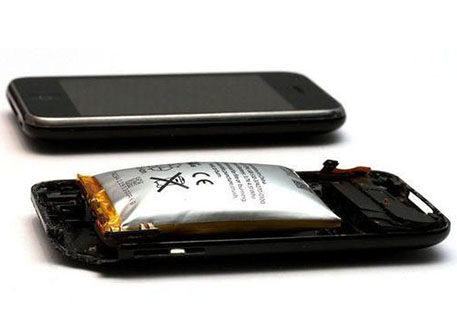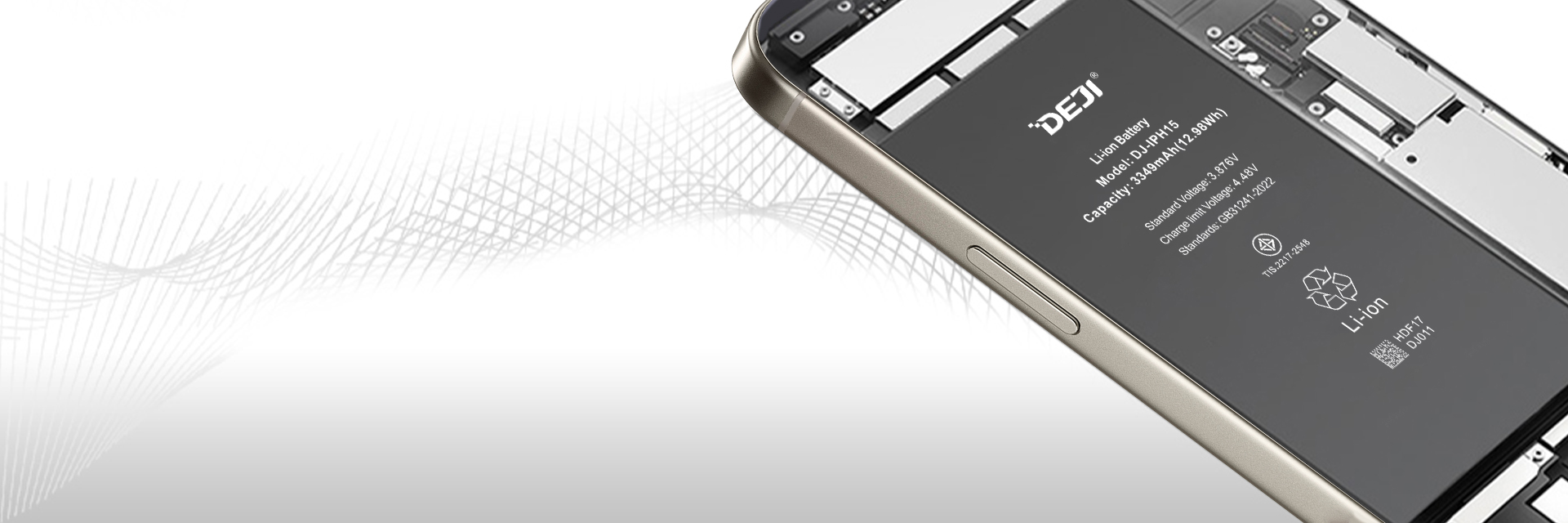Most of the smart phones we use now are all-in-one, and the mobile phone battery cannot be removed, but most of the mobile phones that were used before use lithium batteries. Lithium battery cell phones will swell if they are used for a long time. Can the battery continue to be used after swelling? Many people have this question, but it is not possible. Because when the mobile phone battery expands, it indicates that the battery has the possibility of exploding. Next, let the DEJI battery manufacturer analyze how to deal with the solution of mobile phone battery swelling for you.

Understanding the Causes of Cell Phone Battery Swelling
1. Most cell phone batteries use high-energy lithium batteries. Generally, this kind of battery will bulge and swell after it is used. It is very dangerous to continue using this phenomenon, so once this happens, you must change the battery in time, and you can't continue using it to avoid cell phone explosions.
2. Generally speaking, the battery of a mobile phone will reach the end of its service life after one or two years of use. Mobile phone batteries cannot be used for a long time. It can be used for up to three years. After one or two years, the battery of the mobile phone will have various problems. The main reason for these problems is the quality of the battery and the normal overuse.
3. Lithium battery is a kind of battery with metallic properties. After this battery is exposed to the air for a long time, it is easy to swell and explode. Lithium battery is also a metal object that can be charged and discharged, so it will chemically react with oxygen. It is less durable.
Handling Swollen Cell Phone Batteries
Immediate Action: If you notice your battery swelling, discontinue its use immediately. Continuing to use a swollen battery poses significant risks.
Safe Disposal: Swollen batteries should not be discarded in regular trash. They contain hazardous materials that can react dangerously, especially if they come into contact with water. To dispose of them safely, place the swollen battery in a secure container or bag and take it to a recycling center that handles electronics or metal waste.
Understanding the Difference Between Cell Phone Battery Swelling and Explosion
It can be challenging for non-professionals to distinguish between swelling and explosion in lithium cell phone batteries. Generally, a swollen lithium battery does not lead to an explosion.
Cell Phone Lithium Battery Swelling occurs during the charging and discharging process. It's caused by internal electrolytes and active materials reacting with moisture, leading to the production of hydrogen, carbon dioxide, and various alkane compounds. However, the concentration of hydrogen and alkanes is not high enough to reach flammable or explosive levels.
Lithium Battery Explosion happens when the battery, whether fully or partially charged, undergoes an internal short circuit. This causes a rapid release of a large amount of energy, leading to an explosion. Factors contributing to such internal short circuits can include being punctured, squeezed, poorly designed protective circuits, or inadequate internal safety designs in the battery.
Preventing Cell Phone Battery Swelling
Preventing cell phone battery swelling involves several important practices aimed at maintaining the health and longevity of the battery. Here are some key strategies:
- Use the Proper Charger: Always use the charger that comes with your phone or a high-quality replacement from a reputable brand. Using an incorrect or low-quality charger can lead to improper charging and damage the battery.
- Avoid Overcharging: Do not leave your phone plugged in for long periods after it has reached 100%. Overcharging can generate excessive heat and stress the battery, leading to swelling.
- Keep the Battery Cool: Avoid exposing your phone to high temperatures. Don't leave it in a hot car, near heat sources, or in direct sunlight for extended periods. Heat accelerates battery degradation and can cause swelling.
- Avoid Deep Discharges: Try not to let your phone's battery drain completely to 0% before recharging. Consistently draining the battery fully can shorten its lifespan and increase the risk of swelling.
- Charge Slowly If Possible: Fast charging can generate more heat. If you're not in a rush, use a slower charging option.
- Minimize Exposure to Cold Temperatures: Just as heat can damage a battery, so can extreme cold. Avoid leaving your phone in a cold environment for extended periods.
- Handle with Care: Physical damage from dropping or striking your phone can harm the battery. Protect your phone with a case and handle it gently.
- Regularly Monitor Battery Health: Some smartphones have built-in tools to monitor battery health. Use these tools to check on your battery’s condition. If you notice any decrease in performance or health, consider replacing the battery.
- Avoid Stressful Operations: Prolonged use of resource-intensive applications can heat up your phone and stress the battery. Limit the use of such applications continuously for long periods.
- Store Properly If Not In Use: If you're not going to use your phone for an extended period, store it in a cool, dry place with the battery charged to around 50%.
- Use Power-Saving Modes: These modes can reduce battery strain by limiting background data and reducing screen brightness and performance.
- Consider Battery Replacement: If your phone is older and the battery is showing signs of wear, consider replacing it before it starts to swell.
By following these practices, you can help ensure your cell phone battery remains healthy for as long as possible, reducing the risk of swelling and potential hazards associated with it.
 sales@batterydeji.com
sales@batterydeji.com




